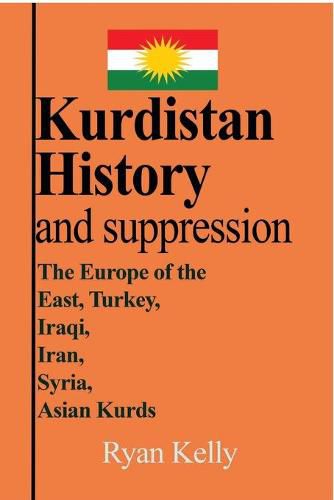Readings Newsletter
Become a Readings Member to make your shopping experience even easier.
Sign in or sign up for free!
You’re not far away from qualifying for FREE standard shipping within Australia
You’ve qualified for FREE standard shipping within Australia
The cart is loading…






This title is printed to order. This book may have been self-published. If so, we cannot guarantee the quality of the content. In the main most books will have gone through the editing process however some may not. We therefore suggest that you be aware of this before ordering this book. If in doubt check either the author or publisher’s details as we are unable to accept any returns unless they are faulty. Please contact us if you have any questions.
Kurdistan History and suppression. The Europe of the East, Turkey, Iraqi, Iran, Syria, Asian Kurds. Kurds are united by language and culture, but divided by politics and religion. The Kurds are notoriously fractious, with political formations based on diverse formal ideologies, as well as more traditional clan-based rivalries. Most Kurds are Sunni, some are Shia, and a few are Yazidi. This complexity produces interesting results, as in late 2014 when the Islamist government of Turkey allowed good Kurds from Iraq to relieve the siege of Kobane, while prohibiting such aid from the bad Kurds of the secular Kurdish groups in Turkey and Syria. The Kurd population, stretching across at least 4 countries, with a diaspora in many more, historically has been hard to quantify. In 1987, estimates suggested that probably numbering close to 16 million kurds, inhabits the wide arc from eastern Turkey and the northwestern part of Syria through Soviet Azerbaijan and Iraq to the northwest of the Zagros Mountains in Iran, respresented the population of what has been referred to as Kurdistan. About half of all Kurds worldwide lived in Turkey. Most of the rest lived in adjacent regions of Iran, Iraq, and Syri
$9.00 standard shipping within Australia
FREE standard shipping within Australia for orders over $100.00
Express & International shipping calculated at checkout
This title is printed to order. This book may have been self-published. If so, we cannot guarantee the quality of the content. In the main most books will have gone through the editing process however some may not. We therefore suggest that you be aware of this before ordering this book. If in doubt check either the author or publisher’s details as we are unable to accept any returns unless they are faulty. Please contact us if you have any questions.
Kurdistan History and suppression. The Europe of the East, Turkey, Iraqi, Iran, Syria, Asian Kurds. Kurds are united by language and culture, but divided by politics and religion. The Kurds are notoriously fractious, with political formations based on diverse formal ideologies, as well as more traditional clan-based rivalries. Most Kurds are Sunni, some are Shia, and a few are Yazidi. This complexity produces interesting results, as in late 2014 when the Islamist government of Turkey allowed good Kurds from Iraq to relieve the siege of Kobane, while prohibiting such aid from the bad Kurds of the secular Kurdish groups in Turkey and Syria. The Kurd population, stretching across at least 4 countries, with a diaspora in many more, historically has been hard to quantify. In 1987, estimates suggested that probably numbering close to 16 million kurds, inhabits the wide arc from eastern Turkey and the northwestern part of Syria through Soviet Azerbaijan and Iraq to the northwest of the Zagros Mountains in Iran, respresented the population of what has been referred to as Kurdistan. About half of all Kurds worldwide lived in Turkey. Most of the rest lived in adjacent regions of Iran, Iraq, and Syri